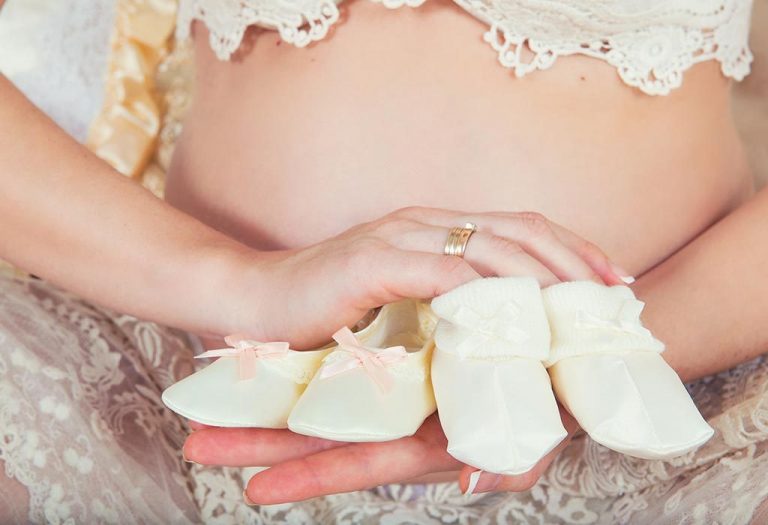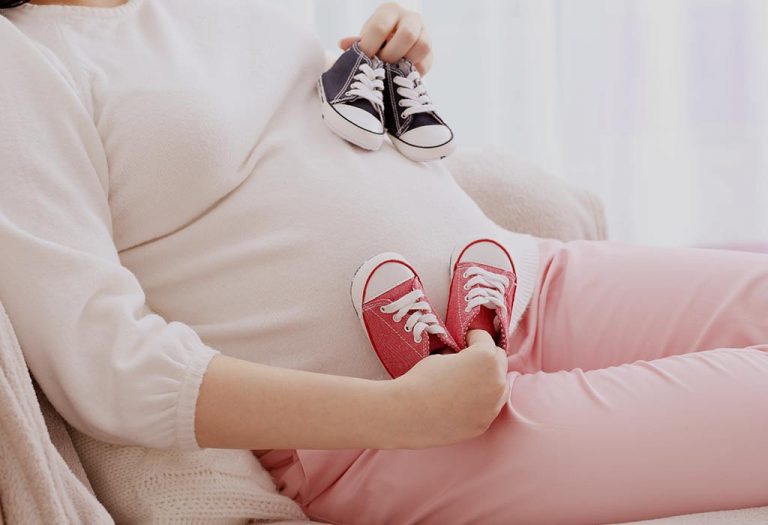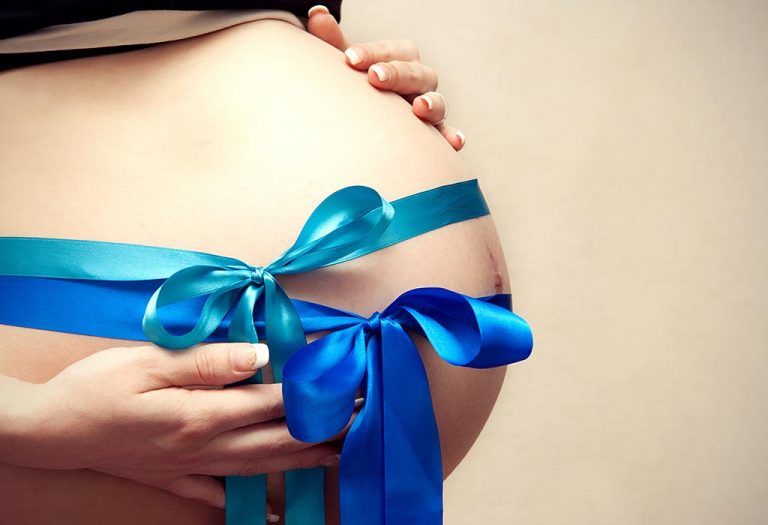Monochorionic Monoamniotic (MoNo) Twins – Meaning, Risk, Diagnosis, and Treatment

When a mom-to-be finds out that she is pregnant with twins, it can be more worrisome than a single pregnancy. If diagnosed with MoMo twins, the pregnancy can even be a risky one. Monoamniotic-monochorionic twins, also known as mono-mono twins or momo twins, share an amniotic sac and placenta. Although this type of twinning is rare, it can bring some health risks during pregnancy. With simple facts and knowledge about the mono-mono twins meaning, various risks involved in such a pregnancy, the mother-to-be can understand what is happening and is better able to discuss with her doctor the risks and complications that could occur.
What Are MoMo Twins?
MoMo twins mean Monochorionic (single covering sac) and Monoamniotic (single amniotic sac or bag of water). It means that both babies are in the same amniotic sac and have only one covering or chorion. These twins are often called mono mono identical twins, and just about 1% of all twins are MoMo twins. A pregnancy with MoMo twins is a high-risk pregnancy. Surprisingly, the rate of monoamniotic twin pregnancies is only 1%, and even fewer for monoamniotic-monochorionic pregnancies (1).
Why Do They Form?
When the egg and the sperm unite and become one, it is known as fertilisation. The resultant embryo is immediately covered with a chorion or egg sac to help protect the developing embryo. Twins occur when there are two embryos in the uterus due to a split. In the case of Monochorionic twins, the embryo, during the process of growth, emerges as two separate embryos, each developing a placenta that connects to the mother’s uterus. If each embryo develops its own amniotic sac, it is called Diamniotic, and the two embryos will share the same egg sac while advancing in their own amniotic sacs. However, when only one amniotic sac is present, both embryos grow in a single amniotic sac and a single egg sac covering, and this leads to MoMo twins.
How Are Mono-Mono Twins Diagnosed?
Ultrasound scanning is the only way to detect MoMo twins. High-resolution ultrasound Doppler sound waves are used to study the growing foetus in real-time. Your rare twin pregnancy needs aggressive monitoring and expert care of a perinatologist. Thus, mono-mono twins ultrasound is very important to have without any fail.
An ultrasound in the first trimester is enough to determine whether the twins share a placenta and amniotic sac, and it is almost 98 accurate (2).
Risks and Complications Associated With Monochorionic Monoamniotic Twins
Almost all MoMo twin deliveries are premature deliveries. The twin foetuses connect to the placenta via their umbilical cords. It puts them at risk of several complications. Since the health risks of mono-mono-twin pregnancy are high, the survival rate of such pregnancies is about 70% (3).
1. Cord Entanglement
Cord entanglement is a complication associated with twins who share a single amniotic sac. Since there is no amniotic membrane separating them, their umbilical cords could get entangled, cutting off the vital blood supply and nourishment to the growing babies. If the twins get entangled and tied together in the uterus, labour and delivery may be complicated as one of them could get stuck in the birth canal. This could endanger the life of the babies, and cause foetal distress.
2. Cord Compression
As twins share the amniotic sac, there is a chance that one might press against the other’s umbilical cord while making internal movements. Prolonged pressure may cut off the blood supply and nutrients going to the other baby, resulting in foetal death.
3. Twin-to-Twin Transfusion Syndrome (TTTS)
This happens if one twin receives a majority of the nourishment in the womb, causing the other twin to become undernourished. Diagnosis rests on comparing the physical development of both of the twins.
4. Preterm Birth
Most monoamniotic twins are born prematurely, because full-term pregnancy is risky and deemed unsafe, due to the risk of cord entanglement and compression. Usually, the twins are delivered by cesarean section after 34 weeks in the womb (4).
Many monoamniotic twins have to be delivered sometimes as early as 26 weeks, depending on the type and level of risks involved. MoMo twins that have been delivered pre-term face many life-threatening conditions, both in the womb and on being delivered.
5. Twin Reversed Arterial Perfusion Sequence
In this twin reversed arterial perfusion sequence (TRAP sequence), one twin’s heart doesn’t develop and the other twin’s heart pumps the blood for both twins, which puts immense pressure on the other twin’s heart.
Eventually, the twin with a failed heart cannot survive, and the healthy twin’s heart struggles due to the workload of pumping the blood for two people, which may lead to heart failure. In such cases, the usual treatment includes early delivery or cutting off the blood supply between the twins to ensure the healthy twin’s chances of survival (5).
Treatment for Monoamniotic Twins
High-resolution Doppler Ultrasound imaging, which is a non-invasive test, will help assess the growth of the babies, and identify potential cord problems. Such tests allow the doctor to study if it is necessary to intervene or deliver the babies, due to their cords getting entangled or compressed.
As the process of a MoMo pregnancy is considered high risk, there is no other way than to deliver the babies in cases of complications. A perinatologist or an experienced twin delivery obstetrician should be consulted, to weigh the risks of the pregnancy, and whether there is any threat to the lives of the babies and mother-to-be.
Since the risk of cord entanglement and compression increases after 34 weeks, MoMo twins are usually delivered after 32 weeks, and steroids are administered to help their lung development after birth. A cesarean section is mandated for a MoMo twin pregnancy, to avoid cord prolapse that occurs when the second baby’s cord is expelled as the first baby is delivered (6).
In a study observed on 29 women with MoMo twins, cord entanglement was noted in 28 out of 29 pregnancies at birth. Additionally, out of 29 pregnancies, 15 underwent planned cesarean delivery, and 14 attempted vaginal delivery, in which 6 went through induction of labour, and 10 were successful (7).
An experimental drug, Sulindac, has, of late, been used to lower the amount of fluid in the amniotic sac. This is thought to reduce the amount of foetal movement, cord entanglement, or compression.
Aggressive foetal monitoring of the monoamniotic twins is a must throughout your pregnancy, with bi-weekly control of foetal heart rate and movement after the 26th week. If required, you may even need to be hospitalised after the 28th week.
Other Facts About Mono-Mono Twins
- MoMo babies are always same-sex babies, since they are formed from the splitting of one embryo (8).
- MoMo twins are very rare. Only 1% of twins are monoamniotic.
- In early pregnancy and up to 24 weeks, monochorionic twins have a low survival rate of 50%.
- Sulindac is a drug that reduces the amount of amniotic fluid, thereby reducing the space that babies have in which to move around.
- If you are dealing with MoMo multiples, consult a perinatologist rather than your regular obstetrician. This is because MoMo twins are classified as high risk, and would require a doctor who specialises in such type of pregnancies.
- After 28 weeks of pregnancy, hospitalisation is advisable (only if recommended by your doctor).
- In early pregnancy, MoMo twins are often misdiagnosed, because the separating amniotic membrane is fragile. Later reports of ultrasound scanning could reveal a dividing membrane, confirming a MoDi (Monochorionic, Diamniotic) pregnancy.
If you are pregnant with twins, it is an absolute joy. While there are risks and complications to worry about, MoMo twins are a rare occurrence, and constant monitoring by an experienced obstetrician or perinatologist is recommended, so that you have all the facts in hand, and can still enjoy your pregnancy journey.
References/Resources:
1. Prefumo F, Fichera A, Pagani G, Marella D, Valcamonico A, Frusca T. The natural history of monoamniotic twin pregnancies: a case series and systematic review of the literature. Prenat Diagn.; PubMed; https://pubmed.ncbi.nlm.nih.gov/25399524/; March 2015
2. Jha. P, Morgan. T. A, Kennedy. A; US Evaluation of Twin Pregnancies: Importance of Chorionicity and Amnionicity; RSNA; https://pubs.rsna.org/doi/10.1148/rg.2019190042; November 2019
3. Van Mieghem T, Abbasi N, Shinar S, Keunen J, Seaward G, Windrim R, Ryan G. Monochorionic monoamniotic twin pregnancies. Am J Obstet Gynecol MFM.; PubMed; https://pubmed.ncbi.nlm.nih.gov/34728404/; March 2022
4. Miegham. T. V, et al.; Monochorionic monoamniotic twin pregnancies; American Journal of Obstetrics & Gynecology MFM, Volume 4, Issue 2; https://www.ajogmfm.org/article/S2589-9333(21)00215-9/abstract; March 2022
5. Vitucci A, Fichera A, Fratelli N, Sartori E, Prefumo F. Twin Reversed Arterial Perfusion Sequence: Current Treatment Options. Int J Womens Health.; PubMed; https://pubmed.ncbi.nlm.nih.gov/32547251/; May 2020
6. Su. L. L; Monoamniotic twins: diagnosis and management; Acta Obstet Gynecol Scand 81; https://obgyn.onlinelibrary.wiley.com/doi/pdfdirect/10.1034/j.1600-0412.2002.811101.x; April 2002
7. Khandelwal. M, et al.; Monoamniotic Monochorionic Twins—Can They Be Delivered Safely Via Vaginal Route? [9]; Obstetrics & Gynecology; https://journals.lww.com/greenjournal/abstract/2016/05001/monoamniotic_monochorionic_twins_can_they_be.9.aspx; May 2016
8. Identical Twins; Natural Human Genome Research Institute; https://www.genome.gov/genetics-glossary/identical-twins
Also Read:
Twin Pregnancy Types
Amazing Facts About Twins
Mirror Twins: What Are They & Their Characteristics
Fraternal Twins – Things That Parents Should Know
Was This Article Helpful?
Parenting is a huge responsibility, for you as a caregiver, but also for us as a parenting content platform. We understand that and take our responsibility of creating credible content seriously. FirstCry Parenting articles are written and published only after extensive research using factually sound references to deliver quality content that is accurate, validated by experts, and completely reliable. To understand how we go about creating content that is credible, read our editorial policy here.

























